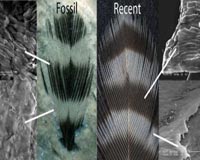 ht Muslim developing nations agreed on Tuesday to embark on joint ventures to boost food production and endorsed a 10-year blueprint to expand trade cooperation.
ht Muslim developing nations agreed on Tuesday to embark on joint ventures to boost food production and endorsed a 10-year blueprint to expand trade cooperation. In a joint statement, the Developing Eight summit warned that the current global shortage and skyrocketing prices of food posed a “serious threat’’ to socio-economic stability.
It also urged the international community to take action to tame spiralling oil prices and vowed to collaborate to develop alternative fuels and peaceful uses of nuclear energy – in an apparent support for Iran’s nuclear programme that has been criticised by the West. Malaysian Prime Minister Abdullah Ahmad Badawi said the group would promote joint ventures among their companies on projects to produce fertiliser, animal feed and create a seed bank to ease supply constraints in agricultural output.
“We want to cooperate in areas of food production. We want to increase food supply,’’ Mr Badawi, who chaired the summit, told a news conference.
“We have land, plenty of good and fertile land. We can form joint venture companies to invest.’’
Formed in 1997, the group brings together Indonesia, Malaysia, Bangladesh, Pakistan, Iran, Turkey, Egypt and Nigeria, a market of nearly one billion people.The meeting coincides with the Group of Eight summit under way in Japan.The D-8 summit also agreed to take coordinated position in international forums and enhance regional cooperation to promote interests of developing Muslim nations.
At the end of the summit, “Kuala Lumpur declaration on meeting global challenges through innovative cooperation” was adopted in the final open session by the heads of the delegations of the eight member countries.
In the three-page joint declaration members reiterated their commitment to goals of the grouping.“We consider this summit as a turning point in the history of D-8 cooperation celebrating the tenth anniversary and adopting ten-year roadmap and other basic documents to enhance cooperation and solidarity among ourselves.”
The declaration recognised the need to address the current global food shortages and considered it a threat to socio-economic stability. They accepted a Bangladesh proposal to consider creation of a D-8 Food Fund.
On surging oil prices, the declaration expressed commitment to efforts in the energy sector and acknowledged the importance of collaborative efforts to enhance capacity, transfer of technology, exploration of new sources of supply, development of alternative fuels, including renewable sources, as well as peaceful use of nuclear energy.The declaration recognised intra-regional mobility of labour an effective tool to poverty eradication and development.
In this regard, the members agreed to enhance cooperation and exchange experience concerning protection and promotion of the rights of migrant workers.
The members also agreed to focus on promotion of halal industry by launching joint ventures.
The declaration appreciated the contribution of Malaysia in developing common standards through Halal Development Cooperation, International Halal Integrity Alliance, and the Malaysian International Halal Showcase and the offer of Malaysian Technical Cooperation Programme to conduct halal training programme.
It was also agreed that members would jointly harness the potential of Islamic banking and finance.
It welcomed signing by Malaysia of the agreement on simplification of visa procedures for D-8 businessmen and its ratification by Bangladesh, Iran, Turkey and Pakistan.



























